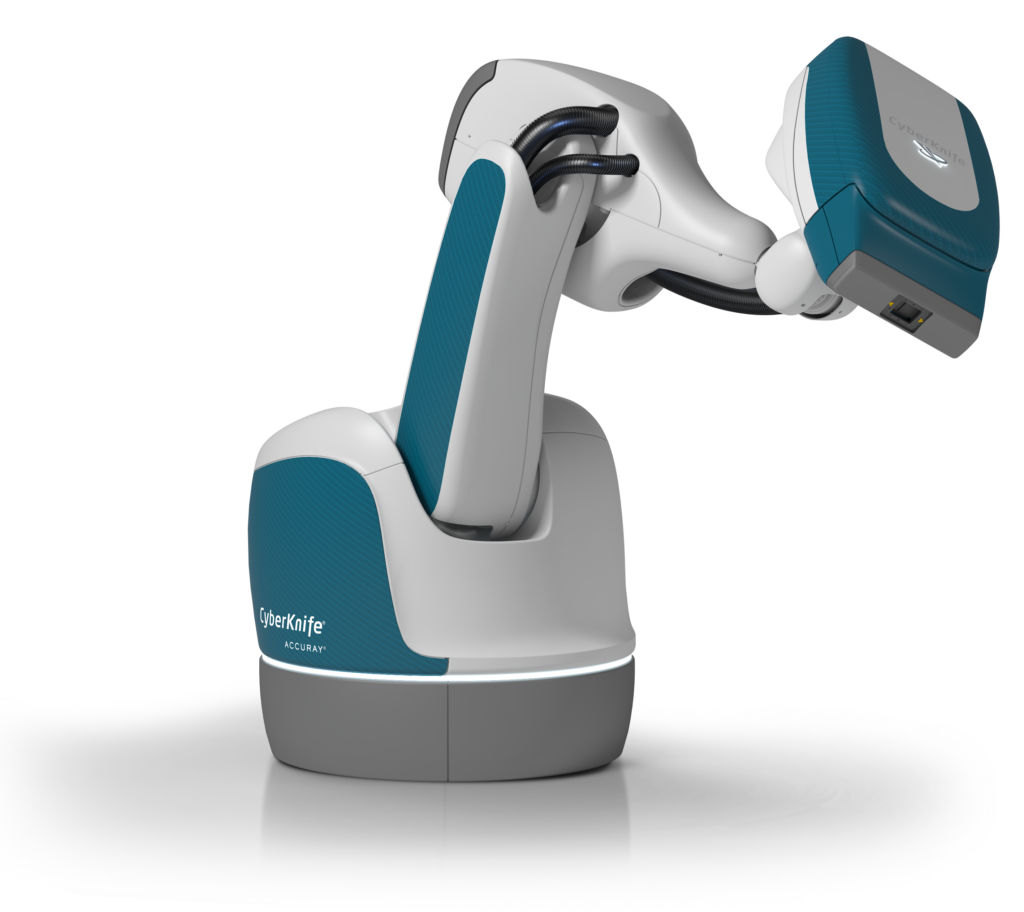References:
1 Wowra B. et al. “Quality of radiosurgery for single brain metastases with respect to treatment technology: A matched-pair analysis.” J Neurooncol. 2009; 94: 69-77.
2 Muacevic A. et al. “Feasibility, safety, and outcome of frameless image-guided robotic radiosurgery for brain metastases.” J Neurooncol. 2010; 97: 267-274.
3 Shultz et al. “Repeat Courses of Stereotactic Radiosurgery (SRS), Deferring Whole-Brain Irradiation, for New Brain Metastases After Initial SRS.” International Journal of Radiation Oncology Biology Physics. 2015; 92: 993-999.
4 Gerszten P.C. et al. “Radiosurgery for spinal metastases: Clinical experience in 500 cases from a single institution.” Spine. 2007; 32: 193-199.
5 Gagnon G.J. et al “ Treatment of spinal tumors using CyberKnife fractionated stereotactic radiosurgery: pain and quality-of-life assessment after treatment in 200 patients.” Neurosurgery. 2009; 64: 297-306.
6 Heron D.E. et al. “Single-session and multisession cyberknife radiosurgery for spine metastases-university of pittsburgh and georgetown university experience.” J Neurosurg Spine. 2012; 17: 11-18.
7 Colombo F. et al. “CyberKnife radiosurgery for benign meningiomas: short-term results in 199 patients.” Neurosurgery. 2009; 64: A7-13.
8 Jumeau et al “Vestibular shwannomas treated with CyberKnife: clinical outcomes.” Tumori. 2016; 102: 569-573.
9 Hansasuta A. et al. “Multisession stereotactic radiosurgery for vestibular schwannomas: Single-institution experience with 383 cases.” Neurosurgery. 2011; 69: 1200-1209.
10 Casentini L. et al. “Multisession stereotactic radiosurgery for large vestibular schwannomas.” J Neurosurg. 2015; 122: 818-824 – https://doi.org/10.3171/2014.11.JNS131552.
11 Killory B.D. et al “Hypofractionated CyberKnife radiosurgery for perichiasmatic pituitary adenomas: Early results.” Neurosurgery. 2009; 64: A19-25.
12 Colombo F. et al. “Early results of CyberKnife radiosurgery for arteriovenous malformations.” J Neurosurg. 2009; 111: 807-819.
13 Romanelli P. et al. “Image-Guided Robotic Radiosurgery for Trigeminal Neuralgia” Neurosurgery. 2017; Nyx571.
14 Colombo et al. “CyberKnife Radiosurgery for Benign Meningiomas: Short-Term Results in 199 Patients.” Neurosurgery. Volume 64 Number 2 February 2009 Supplement.




